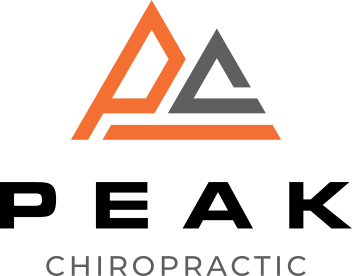If you're grappling with arthritis pain, you might be surprised to discover the range of alternative therapies available that can complement traditional treatments. From yoga and acupuncture to dietary changes and herbal remedies, these approaches offer various ways to manage your discomfort and improve your overall well-being. Each method taps into different aspects of health, but the key is understanding how they can work together. Curious about which options might be the most effective for you? Let's explore some of these therapies and their potential benefits.
Understanding Arthritis Pain
Arthritis pain can feel overwhelming, affecting your daily activities and overall quality of life. You might experience varying degrees of discomfort, stiffness, and swelling in your joints, which can make even simple tasks seem challenging. Understanding how arthritis pain manifests is essential for managing it effectively.
When you have arthritis, your immune system may mistakenly attack the joints, leading to inflammation. This inflammation can cause pain, which often fluctuates in intensity. Some days, you might feel relatively comfortable, while on others, the pain could be severe enough to limit your mobility.
You might notice that certain activities, like climbing stairs or gripping objects, become more difficult as the pain intensifies.
Additionally, arthritis pain can have psychological effects. You may feel frustrated or anxious about your condition, especially if it impacts your ability to engage in hobbies or spend time with loved ones.
It's important to recognize that these emotional responses can contribute to the perception of pain, creating a cycle that can be hard to break.
Overview of Alternative Therapies
When managing arthritis pain, exploring alternative therapies can offer you relief beyond traditional treatments.
Mind-body techniques, herbal remedies, and physical therapies are popular options that many find beneficial.
Let's take a closer look at how each of these approaches can help you feel better.
Mind-Body Techniques
Mind-body techniques offer a holistic approach to alleviating arthritis pain by emphasizing the connection between mental and physical health. These practices, including yoga, meditation, and tai chi, focus on reducing stress and promoting relaxation, which can greatly impact your pain levels.
When you engage in yoga or tai chi, you not only improve your flexibility and strength but also cultivate mindfulness. This heightened awareness can help you manage pain more effectively.
Meditation, on the other hand, allows you to quiet your mind, reducing anxiety and creating a sense of peace. By incorporating these techniques into your routine, you can create a powerful buffer against pain.
You might also find that deep breathing exercises enhance your overall well-being. By focusing on your breath, you can lower stress hormones and help your body enter a state of relaxation, which may reduce inflammation.
Herbal Remedies
In addition to mind-body techniques, exploring herbal remedies can provide another layer of relief from arthritis pain. Many people find that certain herbs possess anti-inflammatory and pain-relieving properties that can complement traditional treatments.
For instance, turmeric, with its active ingredient curcumin, is known for its ability to reduce inflammation and may help alleviate joint pain. Similarly, ginger has been shown to have anti-inflammatory effects, making it a popular choice for those suffering from arthritis.
You might also consider boswellia, an herb that may improve joint function and reduce stiffness. Devil's claw is another option, often used to relieve pain and inflammation.
Don't forget about willow bark, which has been used for centuries to treat pain and is sometimes referred to as "nature's aspirin."
When incorporating herbal remedies, it's important to consult with a healthcare professional, especially if you're taking other medications. They can help you determine the right dosages and guarantee there are no potential interactions.
Physical Therapies
How can physical therapies enhance your approach to managing arthritis pain?
Physical therapies, such as physical therapy, occupational therapy, and exercise programs, can play a significant role in alleviating your discomfort. By engaging in structured exercises, you can improve your strength, flexibility, and overall joint function. This not only helps in reducing stiffness but also enhances your ability to perform daily activities with greater ease.
Working with a physical therapist, you'll learn specific exercises tailored to your needs, which can help manage pain more effectively. They can also teach you proper body mechanics to prevent further injury.
Additionally, occupational therapy focuses on adapting your environment and daily routines, making tasks less strenuous.
Incorporating low-impact activities like swimming, walking, or cycling can also provide relief while minimizing stress on your joints.
Benefits of Acupuncture
Acupuncture offers a unique approach to managing arthritis pain by targeting specific points in your body.
You'll find that it can enhance joint mobility and promote overall well-being.
Pain Relief Mechanism
Many people seeking relief from arthritis pain find acupuncture to be a valuable option. This ancient practice involves inserting thin needles into specific points on your body, stimulating your natural pain relief mechanisms. When these needles penetrate your skin, they trigger the release of endorphins, your body's natural painkillers. This can lead to a significant reduction in pain and discomfort.
Acupuncture also enhances blood circulation, which can help reduce inflammation around your joints. Improved blood flow means that crucial nutrients and oxygen reach the affected areas more efficiently, promoting healing and alleviating stiffness.
Additionally, acupuncture influences your nervous system by modulating pain signals. It can help balance your body's energy flow, or "Qi," which may contribute to a greater sense of well-being. As a result, many people report not just pain relief but also an overall improvement in their mood and quality of life.
If you're considering acupuncture, it's important to consult a qualified practitioner who can tailor the treatment to your specific needs. With the right approach, acupuncture could be an effective part of your pain management strategy for arthritis.
Improved Joint Mobility
For those struggling with arthritis, experiencing improved joint mobility through acupuncture can be a game-changer. Many people find that regular acupuncture sessions greatly enhance their ability to move without pain.
This ancient practice helps by reducing inflammation and increasing blood flow to the affected areas, allowing for greater flexibility and ease of movement.
Here are some key benefits of improved joint mobility through acupuncture:
- Increased Range of Motion: Acupuncture can help restore your joints' natural flexibility, making daily activities easier and more enjoyable.
- Reduced Stiffness: By alleviating stiffness, you'll find it easier to get out of bed in the morning or after long periods of sitting.
- Enhanced Physical Activity: With improved mobility, you're more likely to engage in physical activities, which can further support joint health.
- Pain Management: As your mobility improves, you may also notice a reduction in overall pain levels, allowing you to enjoy life more fully.
Holistic Health Benefits
Exploring the holistic health benefits of acupuncture reveals a powerful approach to enhancing overall well-being. This ancient practice isn't just about pain relief; it promotes harmony within your body. By stimulating specific points, acupuncture helps balance your energy, or "Qi," which can improve both physical and emotional health.
You may notice reduced stress and anxiety levels, as acupuncture encourages the release of endorphins and other feel-good hormones. This natural mood boost can create a positive ripple effect, enhancing your daily life and interactions.
Additionally, acupuncture can support your immune system, making you less susceptible to illnesses. By addressing underlying imbalances, it fosters a sense of vibrancy and resilience.
Many people report better sleep quality after acupuncture sessions, which is essential for managing arthritis pain and overall health. A well-rested body can heal more efficiently, reducing inflammation and discomfort.
Incorporating acupuncture into your wellness routine can provide you with a holistic toolkit, addressing not just your arthritis but also enhancing your overall quality of life.
Embrace this alternative therapy and discover how it can work in harmony with your body and mind.
Herbal Remedies for Relief
Herbal remedies offer a promising avenue for those seeking relief from arthritis pain. Many people turn to natural solutions to complement their treatment plans, and certain herbs have shown potential in reducing inflammation and alleviating discomfort.
Here are four herbal options you might consider incorporating into your routine:
- Turmeric: Known for its active compound curcumin, turmeric has potent anti-inflammatory properties. Adding this spice to your meals or taking it in supplement form can help reduce swelling and pain.
- Ginger: Ginger is another powerful anti-inflammatory agent. You can enjoy it fresh, as a tea, or in supplement form. Regular consumption may help ease arthritis symptoms effectively.
- Boswellia: Also known as Indian frankincense, boswellia is used in traditional medicine to treat inflammatory conditions. Studies suggest it can improve joint function and reduce pain, making it a valuable addition to your arsenal.
- Devil's Claw: This herb has been used for centuries to manage pain and inflammation. Research indicates that it may provide significant relief for arthritis sufferers, making it worth exploring.
Before you start any herbal regimen, it's crucial to consult with a healthcare professional. They can help you understand potential interactions with your current medications and guarantee that you choose the right options for your situation.
Integrating these herbal remedies into your routine might just give you the relief you've been searching for.
Yoga and Its Impact
Yoga can considerably enhance your approach to managing arthritis pain by promoting flexibility, strength, and relaxation. This ancient practice offers various postures and techniques specifically designed to improve joint function while easing discomfort. When you engage in yoga, you're not just stretching; you're actively working to strengthen the muscles around your joints. This added support can lead to reduced pain and improved mobility.
In a typical yoga session, you'll focus on gentle movements that encourage increased range of motion. Poses like Child's Pose, Cat-Cow, and Warrior II can be particularly beneficial for maintaining joint health. The key is to listen to your body and modify poses as needed. You don't have to push yourself into a deep stretch; even small movements can yield significant benefits.
Breathwork is another essential component of yoga that can help you manage pain. Focusing on your breath during practice can shift your attention away from discomfort, promoting a sense of calm and control. Plus, regular yoga practice can increase body awareness, helping you recognize early signs of pain or discomfort, so you can adjust your activity levels accordingly.
Lastly, participating in a yoga class can create a supportive community. Connecting with others who share similar challenges can provide emotional support, making your journey toward managing arthritis pain feel less isolating. Incorporating yoga into your routine can empower you to take charge of your health, making it a valuable tool in your pain management strategy.
Mindfulness and Meditation
Mindfulness and meditation can play an essential role in managing arthritis pain by helping you reduce stress and promote relaxation.
Techniques like guided visualization can enhance your mind-body connection, making it easier to cope with discomfort.
Stress Reduction Techniques
Stress can greatly exacerbate arthritis pain, making effective management essential for maintaining your quality of life. One way to combat stress is through mindfulness and meditation practices. These techniques help you focus on the present moment, reducing anxiety and promoting relaxation.
Here are four effective stress reduction techniques you can try:
- Deep Breathing: Spend a few minutes each day focusing on your breath. Inhale deeply through your nose, hold for a moment, then exhale slowly through your mouth. This simple practice can help calm your mind and body.
- Body Scan Meditation: Lie down comfortably and mentally scan your body from head to toe, noticing any tension. As you identify areas of stress, visualize releasing that tension with each breath.
- Mindful Walking: Take a walk outdoors and pay attention to your surroundings. Notice the sights, sounds, and smells, allowing yourself to be fully present in the moment.
- Guided Meditation: Use apps or online resources that offer guided meditations tailored for stress relief. These can provide structured support as you develop your practice.
Incorporating these techniques into your routine can greatly enhance your overall well-being.
Guided Visualization Practices
One powerful technique for managing arthritis pain is guided visualization, which can transport you to a peaceful mental space. This practice involves using your imagination to create calming images and scenarios, allowing your mind to focus away from pain. You might picture a serene beach, a quiet forest, or a cozy room filled with warmth and light.
To get started, find a comfortable position, close your eyes, and take deep, slow breaths. As you relax, visualize a place that brings you joy and tranquility. Engage all your senses—feel the warmth of the sun, hear the gentle waves, or smell the fresh pine trees.
As you immerse yourself in this scene, acknowledge any pain but try not to dwell on it. Instead, direct your attention to the soothing sensations around you. This shift in focus can help reduce your perception of pain and create a sense of control over your body.
Incorporating guided visualization into your daily routine can enhance your overall well-being. Just a few minutes a day can make a significant difference, offering you relief and a renewed sense of peace amidst the challenges of arthritis.
Mind-Body Connection Benefits
The practice of mindfulness and meditation fosters a deep connection between your mind and body, enhancing your ability to manage arthritis pain.
By focusing on the present moment, you can reduce stress and improve your overall well-being. This connection empowers you to take control of your pain and cultivate a sense of calm.
Here are four key benefits of incorporating mindfulness and meditation into your routine:
- Pain Reduction: Mindfulness helps alter your perception of pain, allowing you to experience it with less intensity.
- Stress Relief: Regular meditation lowers cortisol levels, reducing stress that can exacerbate your arthritis symptoms.
- Improved Mood: Mindfulness practices boost serotonin and endorphins, contributing to a more positive outlook on life.
- Enhanced Flexibility: By tuning into your body, you can identify tension or discomfort sooner, allowing for proactive adjustments in your movements.
Chiropractic Care Options
Chiropractic care offers various options to help manage arthritis pain effectively. When you visit a chiropractor, they'll assess your individual condition and create a tailored treatment plan. One fundamental approach is spinal manipulation, which aims to improve joint function and reduce pain. By aligning your spine, you can experience enhanced mobility and decreased discomfort.
In addition to spinal adjustments, your chiropractor may recommend specific exercises to strengthen the muscles surrounding your joints. These exercises help stabilize your joints, which can alleviate pressure and reduce pain. You'll likely learn techniques that you can practice at home, promoting long-term benefits.
Soft tissue therapies are another valuable tool in chiropractic care. Techniques like massage can relieve tension and improve circulation, further easing your arthritis symptoms. Your chiropractor might also utilize modalities such as ultrasound or electrical stimulation to help manage pain and inflammation.
Education plays a critical role in chiropractic care. Your chiropractor will provide guidance on posture, body mechanics, and ergonomic adjustments to support your joints in your daily activities. This knowledge empowers you to make choices that protect your joints and enhance your overall well-being.
Finally, regular chiropractic visits can help you monitor your progress and adjust your treatment as needed. By staying proactive about your care, you can work towards a more comfortable and active lifestyle, free from the limitations that arthritis pain often imposes.
Embracing chiropractic options can be a key step in your journey to relief.
Dietary Changes and Supplements
Making dietary changes and incorporating supplements can greatly impact your arthritis pain management. The food you eat and the nutrients you take can either exacerbate or alleviate inflammation, so it's essential to focus on what benefits your body.
Start by considering these dietary adjustments and supplements that could help reduce your discomfort:
- Emphasize Omega-3 Fatty Acids: Foods rich in omega-3s, like fatty fish (salmon, mackerel), walnuts, and flaxseeds, can decrease inflammation and ease joint pain. Aim to include these in your meals regularly.
- Increase Antioxidant-Rich Foods: Fruits and vegetables, particularly berries, spinach, and kale, contain antioxidants that combat oxidative stress. They can help protect your joints from further damage.
- Consider Turmeric and Ginger: These spices have natural anti-inflammatory properties. You might add turmeric to your dishes or brew ginger tea to enjoy their benefits in your diet.
- Evaluate Your Dairy Intake: Some people find that dairy can worsen arthritis symptoms. If you suspect this might be the case for you, try eliminating dairy for a few weeks to see if your symptoms improve.
Physical Therapy Techniques
Physical therapy techniques can play an essential role in managing arthritis pain and improving mobility. These techniques focus on enhancing your strength, flexibility, and overall function, which can greatly alleviate discomfort and increase your quality of life.
One effective method is therapeutic exercise, tailored to your specific needs. Engaging in low-impact activities like swimming or cycling helps build muscle strength without putting excessive stress on your joints. A physical therapist can guide you through a personalized exercise program, ensuring you're performing movements safely and effectively.
Manual therapy is another valuable technique. This hands-on approach involves a physical therapist manipulating your joints and soft tissues to reduce pain and improve range of motion. Gentle stretching and mobilization can relieve stiffness and enhance circulation, making daily tasks easier.
Additionally, modalities such as heat and cold therapy can provide immediate relief. Applying heat can relax your muscles and improve blood flow, while cold packs can numb inflammation and reduce swelling. Your therapist can recommend the best approach for your specific situation.
Don't overlook the importance of posture and body mechanics. A physical therapist can teach you how to maintain proper alignment during daily activities, reducing strain on your joints and minimizing pain.
Incorporating these physical therapy techniques into your routine can empower you to take control of your arthritis pain. By working closely with a qualified therapist, you can develop a strategy that suits your lifestyle and helps you achieve your goals.
Integrating Therapies Into Treatment
Integrating multiple therapies into your arthritis treatment plan can greatly enhance your overall well-being. Combining conventional methods with alternative therapies can provide a holistic approach to managing pain and improving mobility.
Here's how you can effectively incorporate various therapies into your routine:
- Consult with Professionals: Start by discussing your interest in alternative therapies with your healthcare provider. They can guide you on safe and effective options that complement your current treatment.
- Create a Personalized Plan: Consider your lifestyle, pain levels, and preferences when crafting your therapy plan. Whether it's acupuncture, yoga, or dietary changes, make sure your chosen therapies align with your goals.
- Monitor Your Progress: Keeping track of how different therapies impact your pain and mobility is essential. Document your experiences and discuss them with your healthcare team to make necessary adjustments.
- Stay Open-Minded: Not every therapy will work for you, and that's okay. Remain flexible and willing to try new approaches.
What works wonders for someone else mightn't suit you, so be patient with the process.
Conclusion
Incorporating alternative therapies into your arthritis management can markedly enhance your quality of life. By embracing practices like yoga, acupuncture, and dietary changes, you can reduce pain and improve flexibility. Herbal remedies and chiropractic care further support your journey toward relief. Remember, it's about finding the right combination that works for you. Take control of your pain management and explore these holistic options for a healthier, more balanced life. You deserve to feel your best!



